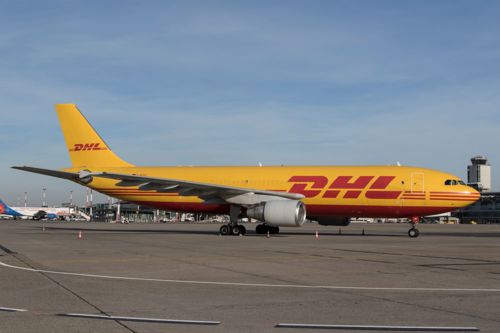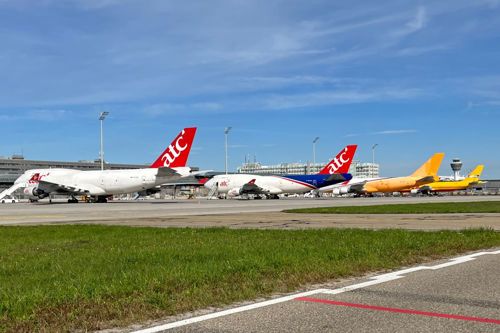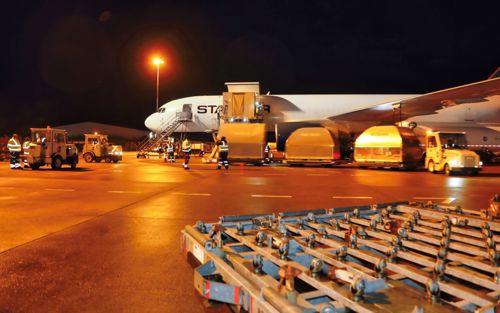
Picture copyright: Air France Cargo
As one of the busiest airports in Europe and the world, Paris-Charles de Gaulle (CDG) Airport is a key hub for exporting French produce and a useful gateway into Europe. In 2022, CDG handled 1.93 million tons of cargo, down 7% on 2021 but a strong performance considering the global slowdown and the end of Pax-freighters flights.
Edouard Mathieu, Head of Development Paris-CDG for Groupe ADP says 2022 was an outstanding performance due to the strength of both general cargo and the express sector. Explaining that much of the cargo passing through CDG is lighter weight such as pharma and luxury goods, Groupe ADP likes to look at flight numbers, and these have been very strong.
FedEx has increased its flight numbers by 25%, with both feeder and international services performing well. CMA CGM started operating from CDG last summer and currently operates 14 frequencies a week, with flight numbers to increase further as its fleet grows. Qatar Airways Cargo is operating up to seven flights a week compared to three a week pre-pandemic.
Mathieu says, “Most of our operators are doing well and the expected decrease in yields has not hindered that growth. We were flying about 30,000 cargo flights before Covid, we now operate up to 43,000. We are only talking about full freighters as pax freighters are behind us, except to/from China.”
Mathieu expects 2023 to be tougher than 2022 but flight numbers are staying high, which is a sign airlines are happy with CDG. Some major players are looking to increase their flight numbers at CDG, says Mathieu.
He says, “A cargo airline does not bother flying from an airport if the yields and returns are not there. For me, a testimony of the resilience that we face in 2023, is that the flight figures will not decrease, it is increasing both for express and general cargo. As far as we are concerned, I do not see decreasing flight numbers.”
Passengers are flying again, rising from around 55% of pre-pandemic numbers at the start of the year to around 80% by the end of the year, providing cargo capacity in the bellies of passenger aircraft.
Mathieu says, “The dynamics across CDG airport have been very positive and is still the case in the first few months of 2023. As we speak, we do not see any slowing down in traffic in the coming weeks and months. Pax load factors are at their highest level, slightly above 2019, the flights are full and the programmes for summer 2023 are in the region of 2019. People want to travel.”
Groupe ADP has been developing its cargo infrastructure over the past decade and a half, says Mathieu, with a new 12,000 square metre building for Kuehne + Nagel, which will open in July, is the last in a line of major developments. The focus from now on is increasing density of flows inside terminals, an area the Cargo City still has a lot to offer.
Mathieu says, “We are trying to make the most of real estate assets, carefully assessing whether it is feasible to go double storey, and we work with the operators to develop industrial flows with automation.”
One of the top forwarding agents is automating its operations for a major French exporter to improve the flow of goods, and developments such as this increases capacity without having to build new facilities.
For a long time, French exports have been going to airports in neighbouring countries, and Mathieu wants them to come back to CDG.
He says, “We lost our exports to other airports over the past 20 years. We want to operate our exports, we are far from having recovered our exports to be shipped to and from Paris-CDG. So we know we have a market to reshape and regain. The market is here and others for many reasons have been benefiting from French exports for too many years.”

Robust demand
Located on the borders of France, Switzerland and Germany, EuroAirport Basel-Mulhouse-Freiburg has access to three key cargo markets. In 2022, total volumes were down 4.2% to 114,320 tons with express freight down 7% and general cargo by 16.3%.
EuroAirport has upgraded its infrastructure with a new cargo terminal geared towards pharmaceuticals, which is IATA CEIV Pharma-certified. Anne Lagarde, Head of Corporate Communications French, says, “The infrastructure enables ultra-fast transport routes from the cargo terminal to the aircraft. It takes only about two minutes to transport the cargo from the temperature-controlled cargo terminal to the aircraft. This is an example of how short the logistics paths are at EuroAirport.”
Cargo performance is linked to the course of the economy, says Lagarde, commenting, “With France, Germany and Switzerland, we have three very strong export markets in our direct vicinity. This circumstance, coupled with the strong pharmaceutical industry present here, which forms the economic backbone of the region, means that we can also assume an interesting and stable freight market in the future.”

Strong local market
The economic strength of southern Germany makes Munich Airport an important gateway to the German market and neighbouring countries across south east Europe. Markus Heinelt, Director Cargo Development says that when long-haul passenger flights restarted, belly capacity was quickly filled.
He says, “As a result, our cargo volume in 2022 increased by 53.9% compared to the previous year. In contrast, in the same period the cargo volume of all German airports taken together was down by 6.6% (according to the German airport association ADV).”
Freight traffic increased during the pandemic from 15% of flight numbers in 2019 to 25%. New routes are being launched to locations such as Mexico City and Osaka, services to Tokyo are returning and the reopening of China will mean flights to key destinations including Beijing and Shanghai.
Heinelt says, “Air cargo plays an important role in Munich Airport’s corporate strategy. The goals are the further development of first class infrastructure and processes as well as the expansion of long-haul passengers services for increasing lower-deck capacities and boost the main-deck cargo capacities.”

In the spotlight
When the pandemic struck, East Midlands Airport was the UK’s busiest airport for a period during the first lockdown based on aircraft movements, says Commercial Director Chris Lane.
Cargo volumes had risen over the previous few years, going from around 300,000 tonnes a year in 2010 (year ending 31 March 2011) to 2014, rising around to 320,000 tonnes for the next two years then hitting 358,000 tonnes for 2019 (year ending 31 March 2020).
The pandemic gave East Midlands a boost, going up 13.4% to 406,000 tonnes 2020 due to medical shipments and online shopping. In 2021, it was up another 8.8% to 442,000 tonnes and numbers are not available for 2022 but they are expected to drop though be 10% above pre-pandemic levels. Some of the growth was driven by the pandemic but a proportion is users permanently switching to air cargo, comments Lane.
He says, “The pandemic certainly shone on a spotlight on the EMA operation. Based on aircraft movements alone EMA was, for a period during the first lockdown, the UK’s busiest airport. PPE and other medical supplies were flown in and out of here during the pandemic which was evidence of the critical importance of this operation.”
East Midlands Airport benefits being in an ideal location next to the M1 motorway and it is within easy reach of the M42, M6 and M5, putting 90% of the population of England and Wales within a 4-hour truck journey. Lane says this makes the airport ideal for time-critical high-value express freight.
There is an increasing awareness of the airport’s importance, says Lane, who adds that demand for dedicated express freight operators shows no signs of waning.
The designation of the East Midlands Freeport will be a further boost for cargo with Lane commenting, “The catalytic effect of this on the region will hopefully stimulate further inward investment which could increase demand for the cargo services by the operators based at EMA.”
This article was published in the April issue of Air Logistics International, click here to read the digital edition and click here to subscribe.
